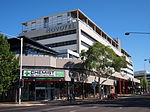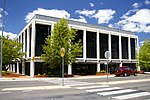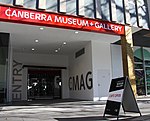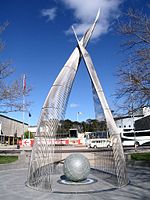1993 Jolimont Centre siege
1990s in Canberra1993 crimes in AustraliaAll pages needing cleanupCrime in the Australian Capital TerritoryHostage taking in Australia ... and 3 more
November 1993 events in AustraliaUse Australian English from March 2018Wikipedia introduction cleanup from June 2011
In November 1993 an event known as the "Jolimont Centre siege" took place resulting in the serious wounding of one person and the death of another over the course of two hours. The centre was set on fire and extensive damage was caused by a lone gunman.The Jolimont Centre, located in Canberra, Australian Capital Territory, was the home of the Department of Industrial Relations and radio station 2CA.
Excerpt from the Wikipedia article 1993 Jolimont Centre siege (License: CC BY-SA 3.0, Authors).1993 Jolimont Centre siege
Northbourne Avenue,
Geographical coordinates (GPS) Address Nearby Places Show on map
Geographical coordinates (GPS)
| Latitude | Longitude |
|---|---|
| N -35.2777 ° | E 149.1289 ° |
Address
EzyMart
Northbourne Avenue
2601 , City
Australia
Open on Google Maps










